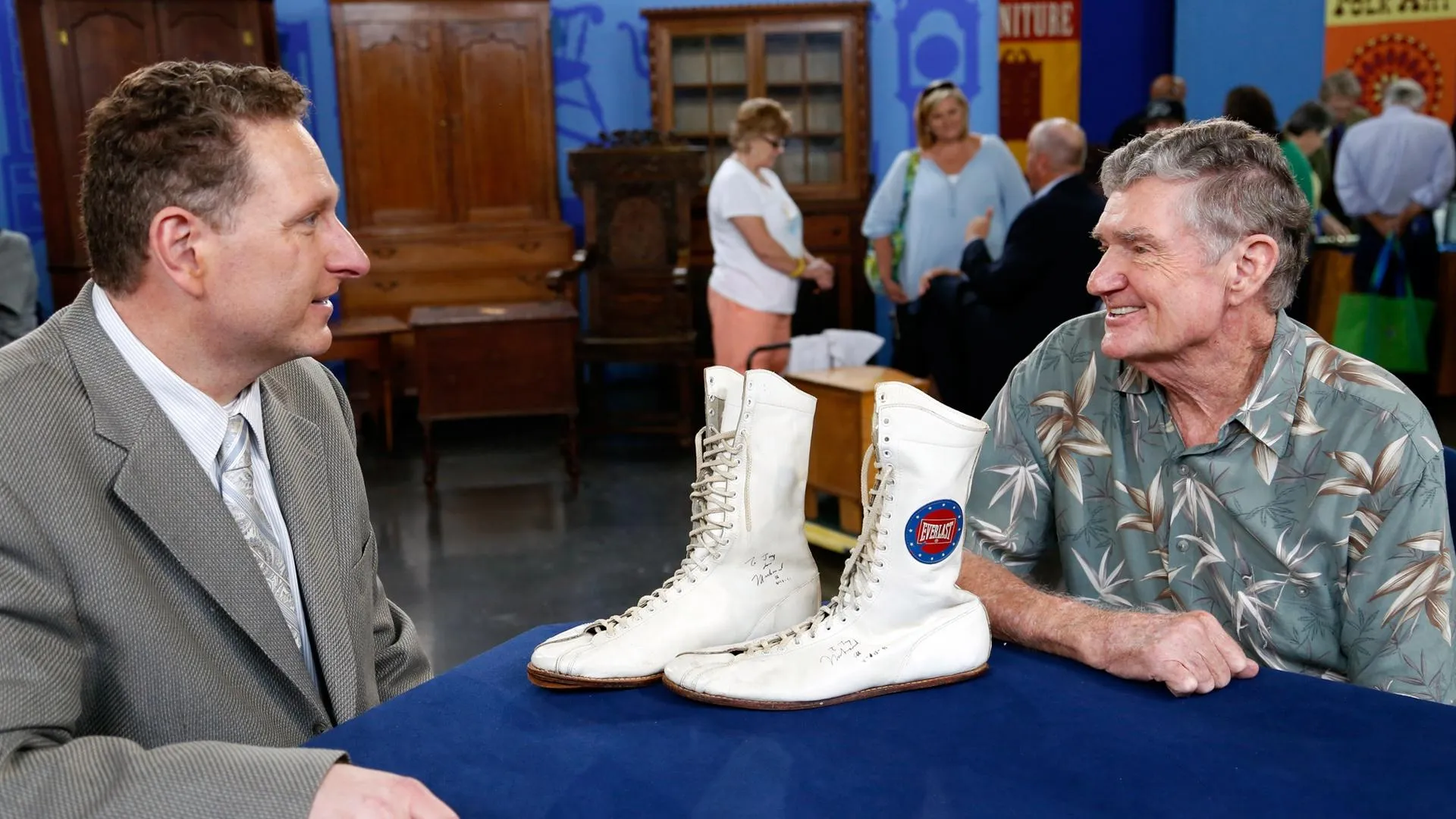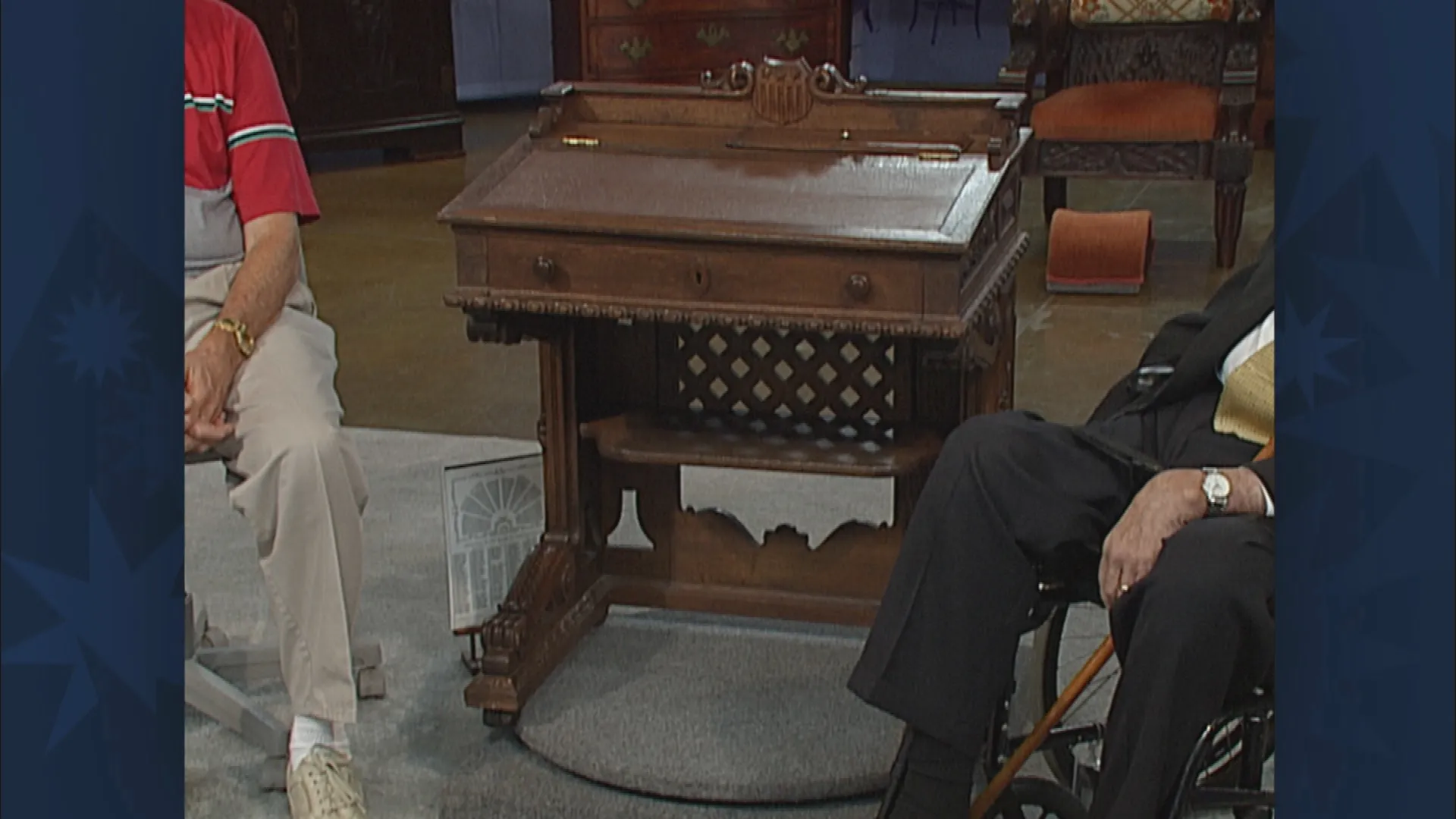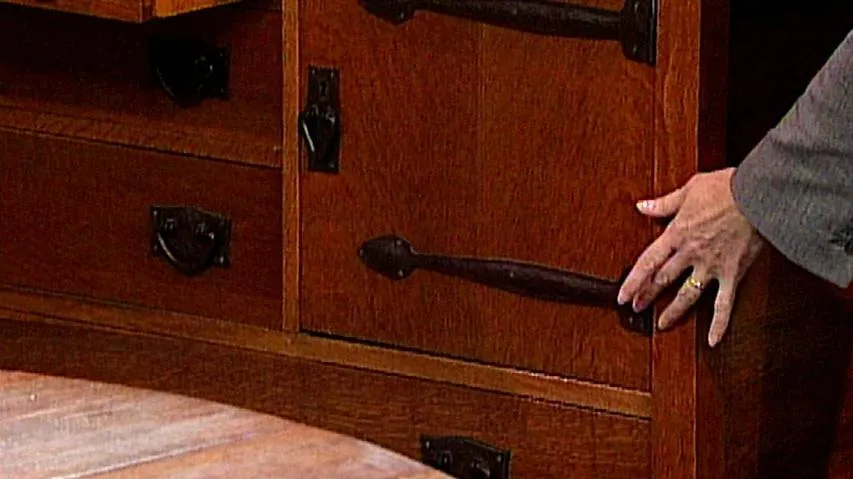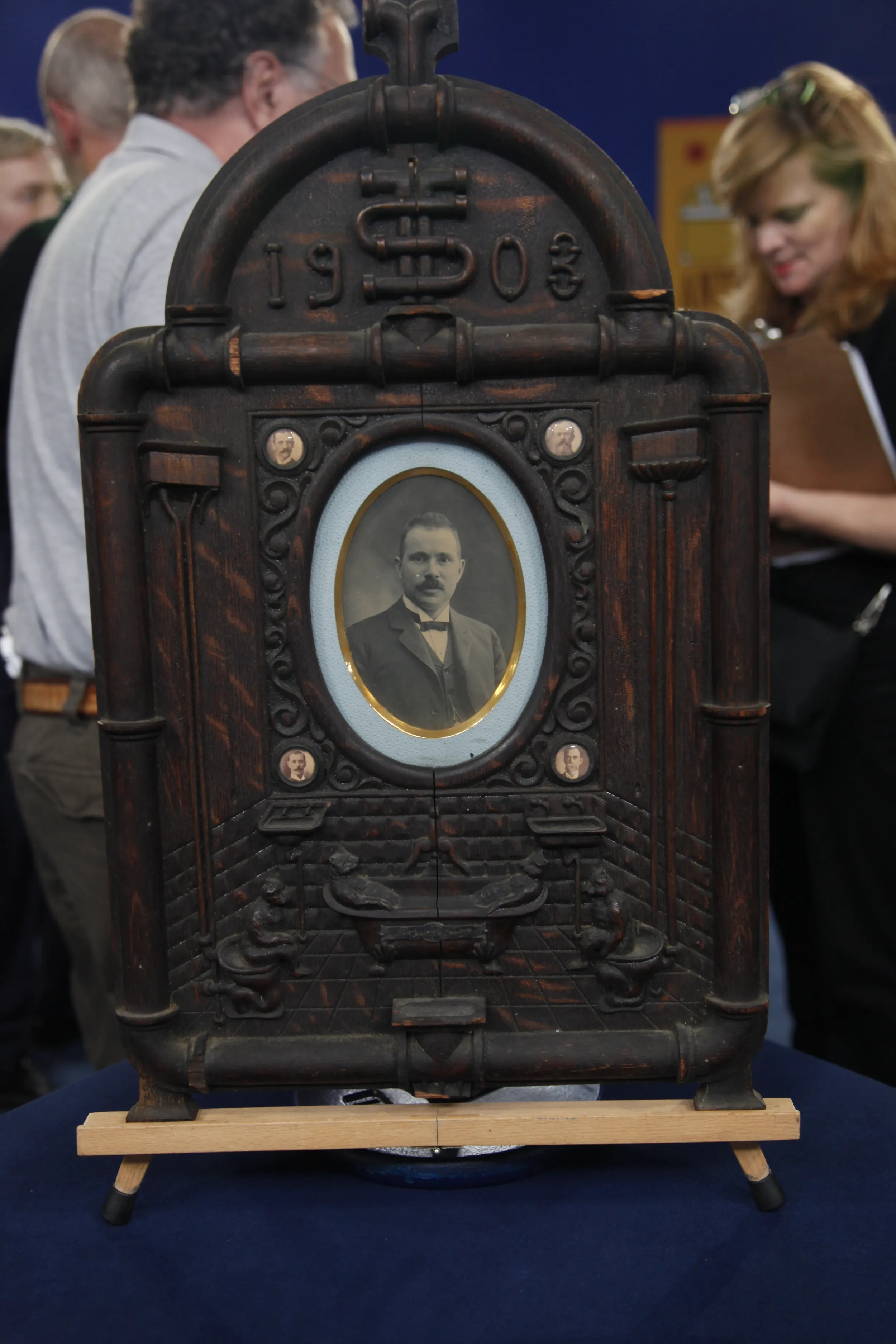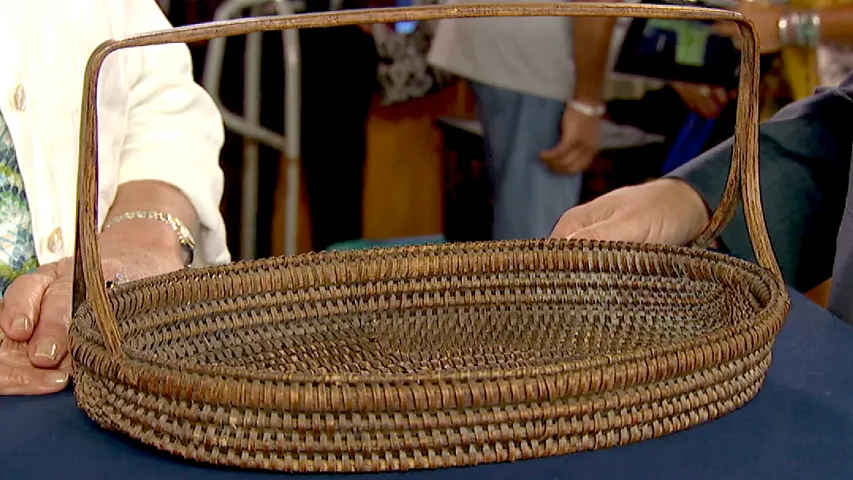GUEST: This chair belonged to my husband's grandmother. And so when she passed away, he inherited it from her estate. She lived a little bit north of Boston. She married a man, and they were in embassy work and lived and traveled internationally in London and in Spain. We don't know what it's worth, we don't know where she got it. We just inherited it, and we love it.
APPRAISER: Okay, well, what your family has here is what we refer to as a great chair, or a master's chair. Now, in order to really understand the quality of this chair, you have to sort of start at the bottom and work your way up. And as you look at the bottom, it exhibits an English style that we call the Jacobean period. It's a very restrained bit of carving. But as you pull up over the chair, you begin to see the chair maker begin to really take a lot of interest in making it. Puts the gadrooned skirt on here and a nice plank seat. And as you work your way up, you have this really interesting paneled back here with inlay. And then you get this big arcaded inlay right in here with a lot of carving around the outside. And it's finally sort of topped off by a really nice frieze of carving. And when we look at a chair, when we look at anything here at Roadshow, we begin to think, "Okay, when should it have been made?" It should have been made probably in the second half of the 1600s, a lot like you were thinking. And then you say, "Well, how many of these elements "really belong in the period in which it should have been made?" And as we begin to look at them, they all begin to sort of jumble together, and it begins to point us in a given direction. Now, Jacobean furniture was made in the late 1600s. Really throughout the 1600s. And then you think, "Well, when was it copied again?" And in this instance, what we have, these were copied, actually, in the very late 1800s. It's made of oak with inlay here. And this is actually very Dutch related. But as you begin to look behind it a little bit, some of these answers begin to come through. What we're talking about here is a chair that someone really wanted to make look a little older. Peekaboo, over on this side. And see these holes at the back here? This panel in the front was actually a furniture panel. This piece of carving at the top is actually a piece of carving from another piece of furniture. So as we put it all together, all of a sudden we think, "Aha, it's a chair that has been made to look old" during the first revival era, where you begin to look at it and say, "This was a cool style. We're going to make this chair, but we're going to add everything to it. It's going to be as good as we can possibly make it." So you have a great revival chair from the 1890s, or around 1900. Have you ever had it appraised?
GUEST: Never had it appraised, no idea.
APPRAISER: Well, in today's market, it's worth around $2,000 at auction.
GUEST: Wow. Cool.

